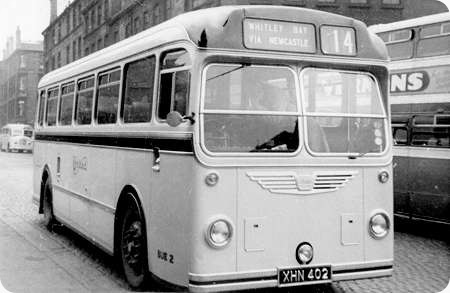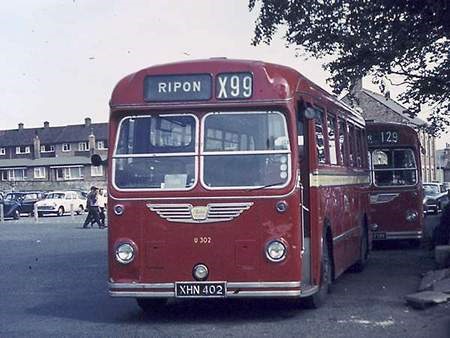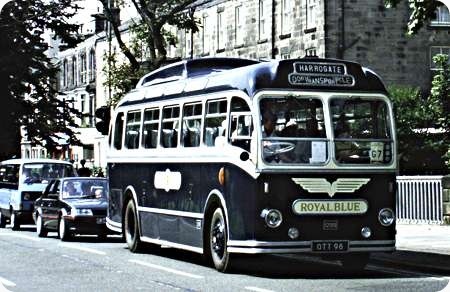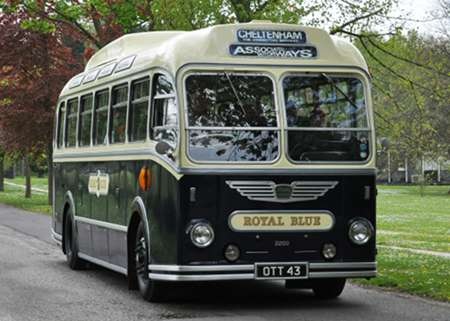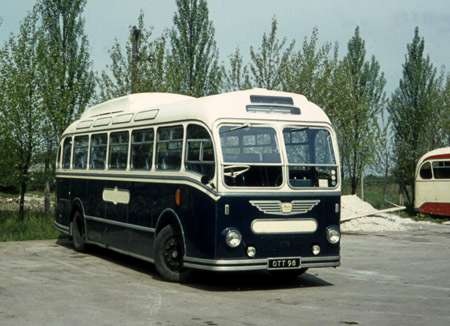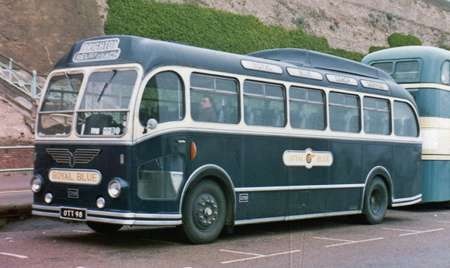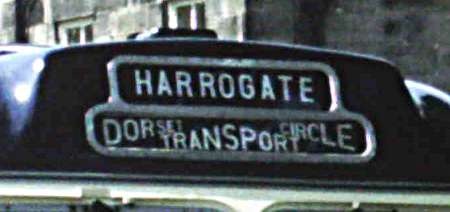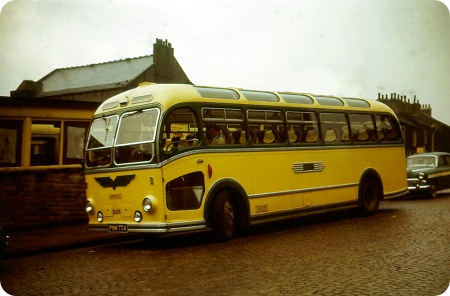United Automobile – Bristol LS6B – XHN 402 – BUE2
United Automobile Services
1955
Bristol LS6B
ECW DP39F
Waiting in Glasgow, exact location unknown, BUE2 is being prepared for departure on the service 14 (later 515) to Whitley Bay. The service ran once a day in winter, and twice a day in summer months. It was a long drawn out affair with a total running time of about 9 hours. A joint operation between SMT and United, vehicles from either end of the route would meet at Galashiels where a refreshment stop was taken, the crews would then swap vehicles and return to their own depot, the vehicles would carry on and return the following day. An Express service also operated via a shorter route, the running time on that was about 5 hours, and generally, the crews worked the whole route returning the same day.
Photograph and Copy contributed by Ronnie Hoye
29/05/14 – 07:5129/05/14 – 07:51
The location looks like Port Dundas Rd once the terminus for many long distance services to Glasgow.
Phil Blinkhorn
30/05/14 – 13:11
Is that and ECW bodied Daimler owned by Alexanders at the top left hand corner of the picture and an S.M.T. A.E.C Regent to the right of the picture?
Stephen Bloomfield
02/06/14 – 10:40
These were beautiful vehicles, good looking, great livery (an example here) and comfortable seats. They also looked good in later life in red livery. The only disappointment was that to me the sound of the Bristol engine never seemed right in an LS, the majority having Gardner engines, which sounded wonderful.
Don McKeown
21/08/20 – 05:32
I have just come across this photo of what by now was U302 downgraded to bus work but still smart and comfortable. The photo was taken in Ripon in July 1968, on a Saturday I think and probably a market day service. Does anyone know where the X99 originated and was it a Saturday only service?
Ian Wild
21/08/20 – 05:54
The X99 was the Middlesbrough to Leeds and Liverpool service. U302 in the summer of 1968 was allocated to Middlesbrough. Perhaps it was a duplicate. There looks to be a similar vehicle standing behind U 302 on the 128 which was the Ripon to Scarborough service, which has been mentioned elsewhere here. That may be either U313 or U315, which were both Ripon cars.
John Gibson
21/08/20 – 06:00
United Automobile Services was a joint operator in the ‘Tyne-Tees-Mersey’ pool which included service X99 which ran from Middlesbrough to Leeds via Stockton, Northallerton, Thirsk, Ripon and Harrogate.
In earlier years there had been through services continuing to Huddersfield, Oldham, Manchester, Eccles and Liverpool. It was latterly divided at Leeds although the appropriate journeys travelling via Eccles continued to run as service X99.
Quite possibly since the photograph was taken on a Saturday the bus would more than likely have been on a duplicate working into Ripon. Despite being long distance services the pool services had numerous intermediate pick-up points and provided a local service over many sections of the overall journeys.
The timetables and routes for the pool services (1932, 1950s, 1960s and 1970s) may be seen via this link: //www.ipernity.com/doc/
David Slater
21/08/20 – 06:06
I would suggest that this was a vehicle off the X99 Tyne/Tees – Mersey, Middlesbrough to Liverpool service.
This was possibly a Duplicate from Leeds or Middlesbrough ending up at Ripon.
There was however a 1955 journey from Middlesbrough (Daily) which terminated in Ripon at 2155, so it could be that. (2 hours not bad for an Express service, at best you could do that journey in one hour by car, no wonder the Bus/Coach industry lost passengers to the Motor Car.)
I remember once when I was part timing for North Western/National Express, out of Manchester, having operated a Dup from Manchester to Leeds, being asked by the West Yorkshire RCC Inspector at Wellington Street, to carry on to Ripon with passengers, for there only, as the service car had burst.
I suitably obliged.
I can not remember if it suited the Conductor or not, but the WYRCC Inspectors at Wellington Street were a good bunch and it was hard to say no.
I can find no reference to an X99 service in the UniteD timetable which covers Ripon area.
Stephen Howarth
22/10/20 – 06:58
X99 timetable – Can be viewed at this link
Ken
Quick links to the - Comments Page - Contact Page - Home Page
